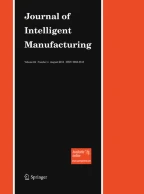Abstract
Design chain management requires many decision makers throughout the product development process. It is critical to reduce complexity and uncertainty of the design process by correctly modeling subjective data associated with decision makers’ preferences. This paper aims at using decision support to find optimal designs by modeling respondent preferences and trade-offs with consideration of uncertainty. Specifically, a simulation-based ranking methodology is implemented and incorporated with traditional conjoint analysis. This process facilitates a schematic decision support process by alleviating user fatigue. In addition, incorporation of uncertainty in the ranking process provides the capability of producing robust and reliable products. The efficacy and applicability of simulation-based conjoint ranking is demonstrated with a case study of a power-generating shock absorber design.
Similar content being viewed by others
References
Adamowicz W., Louviere J., Williams M. (1994) Combining revealed and stated preference methods for value environmental amenities. Journal of Environmental Economics and Management 26(3): 271–292
Amarchinta H., Grandhi R. V. (2008) Multi-attribute structural optimization based on conjoint analysis. AIAA Journal 46(4): 884–893
Arnaout J.-P., Rabadi G., Musa R. (2010) A two-stage ant colony optimization algorithm to minimize the makespan on unrelated parallel machines with sequence-dependent setup times. Journal of Intelligent Manufacturing 21(6): 693–701
Bech M., Gyrd-Hansen D. (2006) Effects coding in discrete choice experiments. Health Economics 14(10): 1079–1083
Belegundu A. D., Chandrupatla T. R. (2000) Optimization concepts and applications in engineering. Prentice-Hall, NJ
Box G. E., Hunter W. G., Hunter J. S. (2005) Statistics for experimenters: Design, innovation, and discovery. Wiley, New York
Bretscher O. (1995) Linear algebra With applications. Prentice Hall, Upper Saddle River, NJ
Choi S. (2009) Reliability assessment using stochastic local regression. International Journal of Reliability and Safety 3(123): 267–285
Choi S.K., Patel J. (2011) Optimal design of cellular structures under random fields. Journal of Engineering Design 22(9): 651–668
Choi S. K., Grandhi R. V., Canfield R. (2006) Reliability-based structural design. Springer, Berlin
Clemen R. T. (1997) Making hard decision: An introduction to decision analysis. South-Western College Pub, Cincinnati
Dynamic Modeling Laboratory: (2002) Dymola user’s manual. Dynasim AB, Sweden
Green P., Carroll J., Goldberg S. (1981) A general approach to product design optimization via conjoint analysis. Journal of Marketing 43(Summer): 17–35
Haimes Y. Y. (1998) Risk modeling, assessment, and management. Wiley, New York
Hayes B. E. (1997) Measuring customer satisfaction: Survey design, use, and statistical analysis methods. American Society for Quality, Milwaukee
Hazelrigg G. A. (1998) A framework for decision-based engineering design. Journal of Mechanical Design 120(4): 653–658
Hazelrigg G. A. (2003) Validation of engineering design alternative selection methods. Engineering Optimization 35(2): 103– 120
Herrmann, J. W. (2008). Decision-based design processes. Technical Report No. 2008-1. College Park, MD: University of Maryland.
Hyde K.M., Maier H.R., Colby C.B. (2004) Reliability-based approach to multicriteria decision analysis for water resources. Journal of Water Resources Planning and Management 130(6): 429–438
Keeney R. L. (1973) A decision analysis with multiple objectives: The Mexico city airport. Bell Journal of Economics and Management Science 4(1): 101–117
Keeney R. L., Raiffa H. (1993) Decisions with multiple objectives: Preferences and value tradeoffs. Cambridge University Press, New York, NY
Lewis K., Chen W., Schmidt L. C. (2006) Decision making in engineering design. ASME Press, New York
Messac A. (1996) Physical programming: Effective optimization for computational design. AIAA Journal 34(1): 149–158
Mizuno S., Akao Y., Ishihara K. (1994) Quality function deployment: The customer-driven approach to quality planning and deployment. Asian Productivity Organization, Tokyo
Orme B. K. (2006) Getting started with conjoint analysis: Strategies for product design and pricing research. Research Publishers LLC, Wisconsin
Park K.-S., Koh H.-M. (2004) Preference-based optimum design of an integrated structural control system using genetic algorithms. Advances in Engineering Software 35(2): 85–94
PES. (2005). Power-generating shock absorber. Pure Energy Systems, Wiki, http://www.peswiki.com/index.php/Directory:Power-Generating_Shock_Absorber.
Phoenix. (2010). http://www.phoenix-int.com/software/phx_modelcenter.php.
Reutterer T., Kotzab H. W. (2000) The use of conjoint analysis for measuring preferences in supply chain design. Industrial Marketing Management 29(1): 27–35
Stewart M.G., Rosowsky D.V., Val D.V. (2001) Reliability-based bridge assessment using risk-ranking decision analysis. Structural Safety 23(4): 397–405
Sawtooth Software: (2002) CVA: A full-profile conjoint analysis system from sawtooth software. Sawtooth Software Inc., Sequim, WA
Tabucanon M. T. (1989) Multiple criteria decision making in industry. Elsevier, Amsterdam
Tappeta R. V., Renaud J. E., Messac A., Sundararaj G. J. (2000) Interactive physical programming: Tradeoff analysis and decision making in multidisciplinary optimization. AIAA Journal 38(5): 917–926
Theil H. (1969) A multinomial extension of the linear logit model. International Economic Review 10(3): 251–259
Thevenot H. J., Steva E. D., Okudan G. E., Simpson T. W. (2007) A multiattribute utility theory-based method for product line selection. Journal of Mechanical Design 29(11): 1179–1184
Tseng M. M., Jiao J. (1999) Methodology of developing product family architecture for mass customization. Journal of Intelligent Manufacturing 10(1): 3–20
Twigg D. (1998) Managing product development within a design chain. International Journal of Operations & Production Management 18(5): 508–524
Ulrich K. T., Eppinger S. D. (2007) Product design and development (4th ed.). McGraw-Hill, New York
Wassenaar H.J., Chen W., Cheng J., Sudjianto A. (2003) Demand analysis for decision-based design of vehicle engine. SAE Transactions 113(5): 677–684
Wolberg J. (2005) Data analysis using the method of least squares: Extracting the most information from experiments. Springer, Berlin
Yu L., Wang L. (2010) Product Portfolio identification with data mining based on multi-objective GA. Journal of Intelligent Manufacturing 21(6): 797–810
Author information
Authors and Affiliations
Corresponding author
Rights and permissions
About this article
Cite this article
Ruderman, A.M., Choi, SK. & Jiao, R.J. Simulation-based conjoint ranking for optimal decision support process under aleatory uncertainty. J Intell Manuf 24, 641–652 (2013). https://doi.org/10.1007/s10845-011-0610-9
Received:
Accepted:
Published:
Issue Date:
DOI: https://doi.org/10.1007/s10845-011-0610-9
